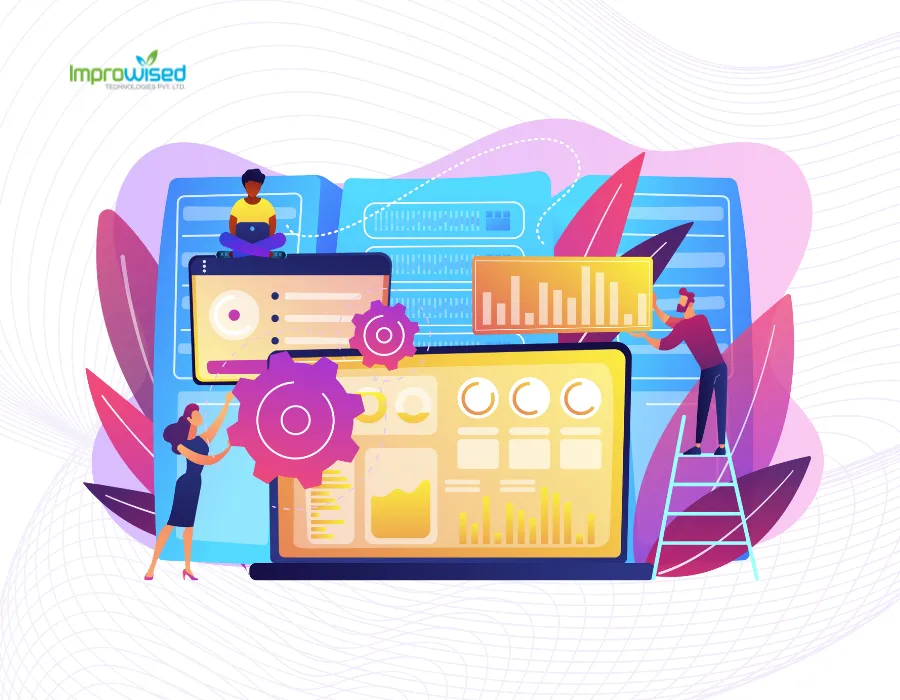November 19, 2025
Unlocking Developer Potential: How Platform Engineering Transforms Developer Experience

By Shyam Kapdi
Improwised Technologies Pvt. Ltd.
Developer experience (DX) in the software landscape has become a crucial factor in determining the creativity, productivity, and retention of engineering teams. Due to fragmented tools, inconsistent environments, and complicated manual processes, traditional IT setups are putting developers under increasing strain, which slows time-to-market and causes burnout. By creating unified, automated internal developer platforms that optimise workflows, lessen cognitive load, and free developers to focus on value creation rather than infrastructure plumbing, platform engineering is redefining this tale.
One of the best indicators of engineering productivity, software dependability, and the success of digital transformation is Developer Experience (DX), which has emerged quietly. Developers struggle because the system around them becomes disjointed, sluggish, and cognitively taxing as software companies grow, not because they lack talent.
The structural solution to this complexity is currently being found in platform engineering. Through planned design, high-trust workflows, and deeply integrated automation, platform engineering reimagines how developers interact with the entire software delivery ecosystem rather than optimising individual developer tools. Supported by practical insights from enterprise engineering teams, current tooling trends, and the changing needs of high-velocity software organisations, this guide reveals how platform engineering radically changes DX.

Understanding Developer Experience (DX) and Its Business Impact
The developer experience is more than just contentment; it is a combination of workflows that facilitate productivity, a consistent environment, ease of cognition, and an organisational feedback culture. Innovation velocity and employee retention are directly impacted by DX: developers who have more autonomy and fewer barriers produce better software more quickly, and attrition costs go down.
Frameworks such as Google’s HEART metric (Happiness, Engagement, Adoption, Retention, Task success) offer structured methods to measure DX in addition to qualitative sentiments. To fill the gap between data and developer realities, truly transformative DX initiatives combine quantitative insights with qualitative feedback loops to adjust platforms responsively.
-
DX is the total experience developers have with tools, workflows, environments, and culture; it drives faster feature delivery and better quality.
-
Improved DX significantly reduces developer churn, saving time and cost in recruitment/training.
-
Frameworks like HEART guide metrics, but real progress comes from combining quantitative data with qualitative developer feedback - aligning measurement with meaningful developer realities.
The Core Role of Platform Engineering in Enhancing DX
Platform engineering goes beyond conventional IT support models by functioning at the intersection of development and operations. Platform engineering teams create and manage internal developer platforms (IDPs), which act as standardised, self-service interfaces to intricate toolchains and infrastructure, in contrast to siloed approaches.
These platforms include “golden paths,” which are carefully planned end-to-end processes that reduce the context switches and decision fatigue that developers frequently encounter. Platform engineering significantly reduces cognitive overhead and increases the creative potential of developers by automating repetitive processes like provisioning, deployment, and scaling.
-
Platform engineering builds internal developer platforms (IDPs) that unify tooling, infrastructure, and workflows into self-service hubs tailored for developer needs.
-
These platforms implement “golden paths” – battle-tested, streamlined workflows that reduce decision fatigue and remove complexity.
-
Automation, standardization, and abstraction collectively strip away repetitive tasks, letting developers focus on value-added coding.
Tools and Technologies Empowering Developer Experience
The platform engineering toolkit reflects a mix of mature and emerging technologies, emphasizing automation, integration, and AI assistance. Key pillars include:
-
Advanced CI/CD pipelines that integrate automated testing, security scanning, and compliance validation deeply into deployment workflows, ensuring faster and safer releases.
-
Infrastructure as Code (IaC) tools that enable version-controlled, repeatable environment setups, significantly decreasing environment drift.
-
Monitoring and telemetry tools providing real-time feedback directly in developer workflows.
-
AI-driven developer assistants delivering contextual coding help, anomaly detection, and proactive insights, representing the frontier of DX innovation.
Such tools synergize to create platforms where developers are not just consumers of resources but active creators of optimized, secure software environments.
Measuring Developer Experience: Metrics, Feedback Loops, and Continuous Improvement
Measurement-free platforms are a guess. It is crucial to set up specific KPIs, such as sentiment analysis from developer surveys or HEART framework metrics.
Continuous refinement is made possible by the platform’s continuous feedback mechanisms, which promote open communication of problems and recommendations.
By avoiding the common mistake of over-automation, which alienates users and leads to tool fatigue, this dynamic approach to measurement guarantees that platform evolution is based on real developer needs.
-
Establish clear KPIs using HEART, sentiment analysis, and platform usage metrics.
-
Design continuous feedback systems embedded in platforms to gather real developer insights, enabling iterative platform enhancements.
-
Avoid over-automation fatigue by balancing automation with developer autonomy and by involving developers as co-creators of the platform.
Organizational and Cultural Transformation via Platform Engineering
Platform engineering encourages independence and cross-team cooperation, which sparks significant organisational cultural changes.
Self-service features empower developers, and governance maintains compliance without oversight - a crucial balance.
Adopting platform engineering techniques successfully depends on change management, which entails training stakeholders on new procedures, coordinating rewards, and fostering an environment that is open to automation and shared responsibility for tools and procedures.
-
Platform engineering drives a shift from siloed DevOps roles to collaborative, autonomous teams empowered by self-service.
-
Change management is critical: educate stakeholders, align incentives to new workflows, and nurture a culture that values automation and shared responsibility.
-
Governance frameworks embedded in platforms ensure security and compliance while preserving developer flexibility.
Security, Compliance, and Developer Experience
Developers are supported by smooth guardrails created by integrating security and compliance into the platform itself, rather than as afterthoughts. By automating compliance checks built into deployment pipelines, security is shifted to the left, reducing bottlenecks and identifying problems early. Developers can stay fast without sacrificing governance thanks to example workflows that transparently combine encryption, access controls, and auditing.
-
Embedding security guardrails and compliance automation within platforms shifts security left, reducing runtime bottlenecks and false positives.
-
Transparent policy enforcement, role-based access controls, and audit-ready logging happen behind the scenes, allowing developers to innovate unhindered.
Also Read: Five Best Platform Engineering Tools for 2025: Make Your Internal Developer Platform Stronger
Real-World Benefits and Case Studies
Companies that use platform engineering report significant productivity increases, with developers’ workloads moving from work to creativity. For example, companies have observed quantifiable increases in developer retention and satisfaction, as well as time-to-market reductions of over 20%. Faster scaling and fewer operational errors are advantageous to startups. These achievements indicate that platform engineering is a strategic tool for gaining a competitive edge as well as an infrastructure upgrade.
-
Organizations report up to 20% faster time-to-market, increased developer satisfaction, and improved retention after adopting platform engineering.
-
Startups benefit from sustainable scaling without operational chaos.
-
Developers save 17% or more time previously lost in context-switching and manual environment setups.
Challenges and Pitfalls to Avoid
Platform engineering has many benefits, but there are still risks. Excessive tool proliferation causes fatigue, platform complexity can undermine simplicity goals, and over-automation can cause brittleness and reduce developer agency. Organisations must prioritise efficient, iterative platform development, stay clear of one-size-fits-all solutions, and retain developers as co-creators rather than merely consumers in order to preserve agility.
1. Over-engineered Platforms: Platforms should start small. Overbuilding leads to low adoption and massive maintenance overhead.
2. Tool Sprawl: Too many tools disguised as “developer empowerment” can overwhelm teams. The platform should simplify, not add noise.
3. Ignoring Developer Feedback: Platforms fail when designed around assumptions instead of real-world workflows.
4. Centralized Control: Platform engineering is about enablement - not creating a new gatekeeping team.
The Future of Developer Experience: Trends and Innovations
Advances in AI and ML will transform DX through intelligent automation that responds to developer behaviours, hyper-personalized developer support, and predictive analytics for workload balancing. Platform teams will need to prepare for a changing workforce that demands smooth, cloud-native, and cognitively frictionless environments.
-
AI/ML-powered analytics will predict bottlenecks and optimize workflows in real-time.
-
Intelligent automation will adapt platform services to individual developer preferences and habits.
-
Preparing for evolving workforce expectations around seamless, cloud-native, and frictionless DX will be essential.
Read More: Which Companies are Redefining Developer Experience Through Platform Engineering?
Conclusion
Platform engineering is a strategic lever that transforms DX, speeds up innovation, and improves retention. It goes far beyond simply improving infrastructure. To unleash developers’ full potential, leaders should pinpoint pain points, test targeted internal platforms, incorporate ongoing feedback, and promote cultural change. Platform engineering services must be recognized as a fundamental skill for software engineering going forward.


By Shyam Kapdi
Improwised Technologies
Pvt. Ltd.

November 14, 2025
How to Build a High-Impact Internal Developer Platform: Step-by-Step Blueprint, Tools, and Best Practices

By Shyam Kapdi
Improwised Technologies
Pvt. Ltd.

November 12, 2025
Port vs Backstage: Which Developer Experience Platform Is Best for Your Internal Portal?

By Shyam Kapdi
Improwised Technologies
Pvt. Ltd.
Optimize Your Cloud. Cut Costs. Accelerate Performance.
Struggling with slow deployments and rising cloud costs?
Our tailored platform engineering solutions enhance efficiency, boost speed, and reduce expenses.
